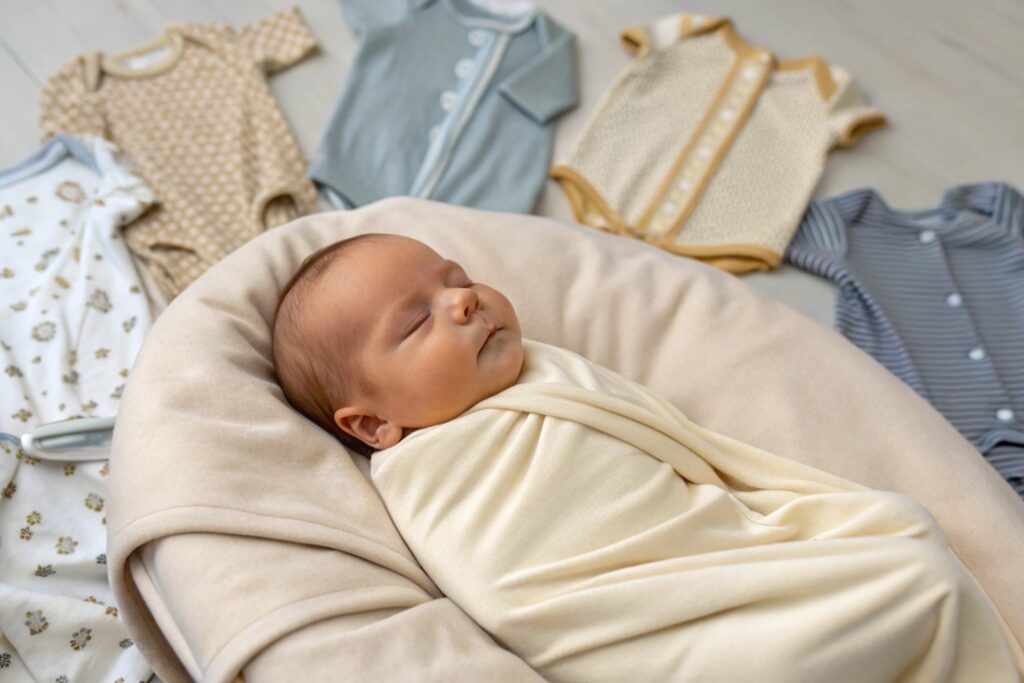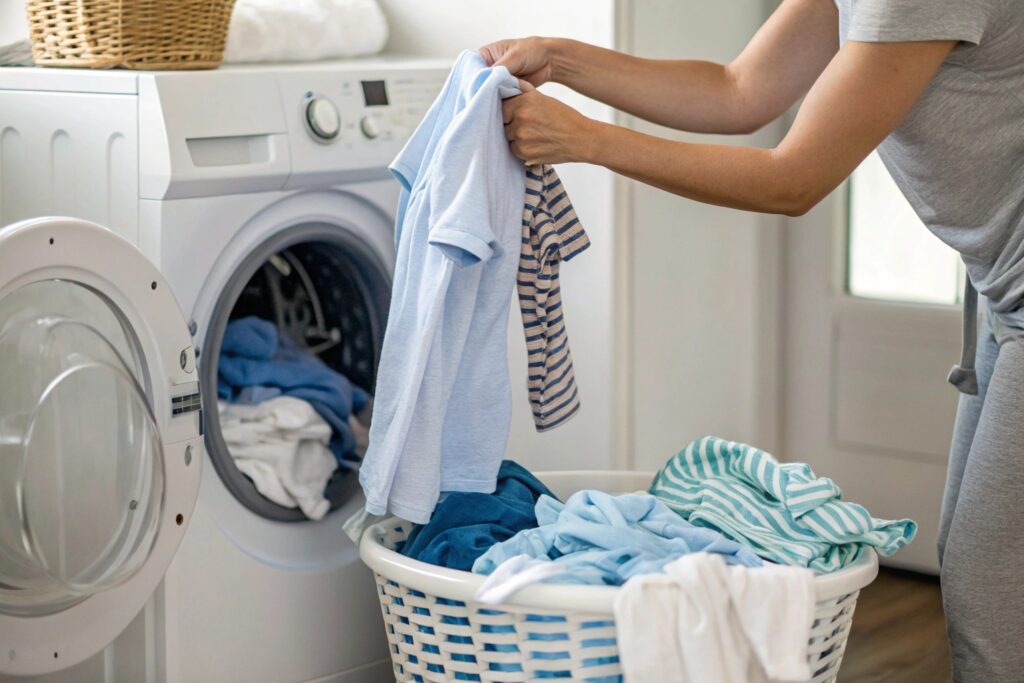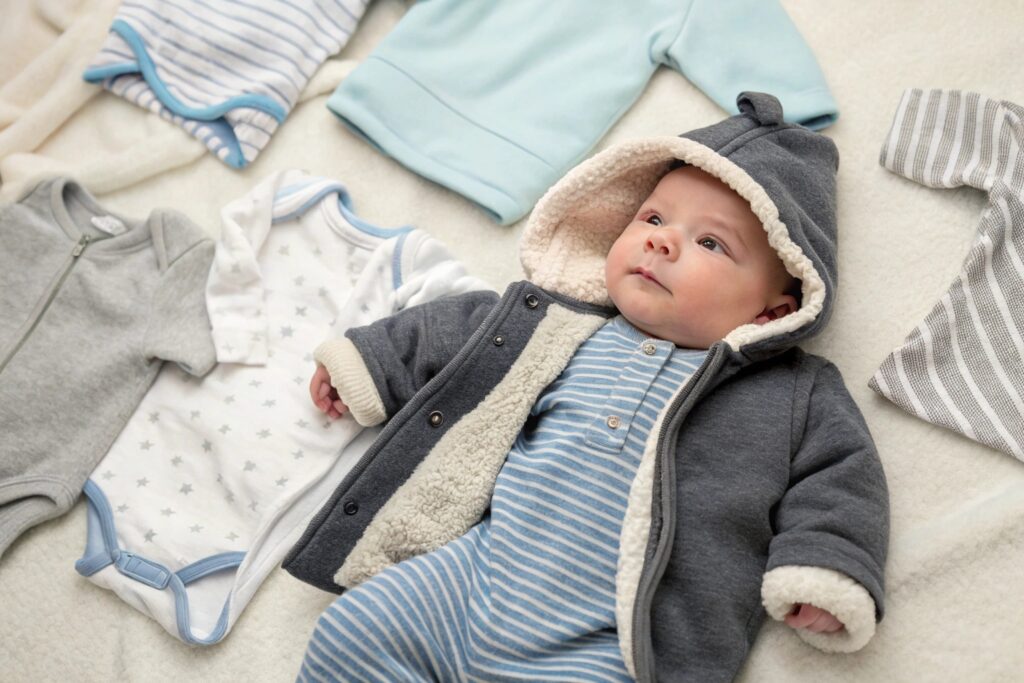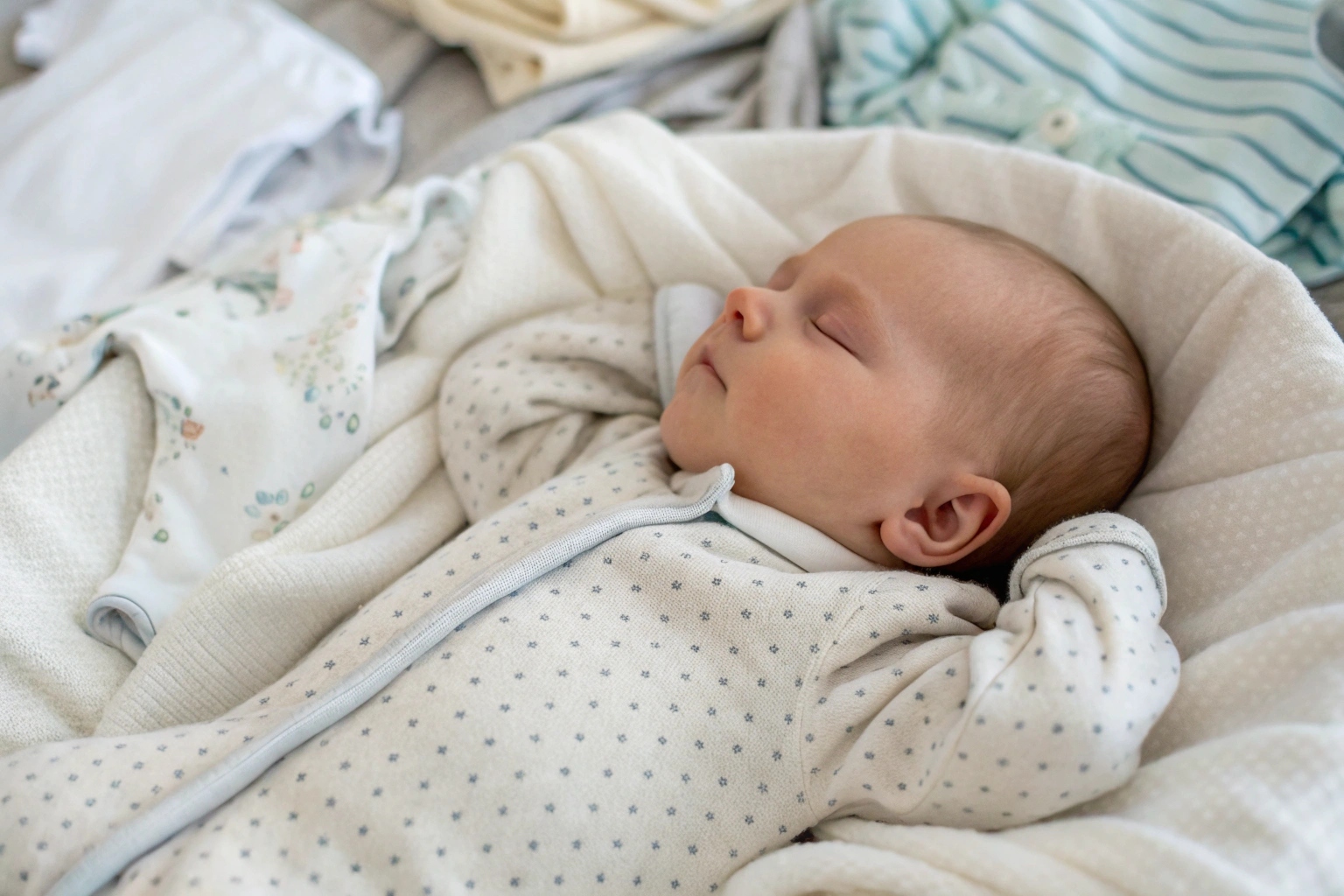Buying clothes for a baby may seem simple—but any parent knows it’s about more than cute prints and tiny sizes.
When shopping for baby clothing, parents look for safety, softness, comfort, durability, and smart features that make daily life easier. It’s about finding pieces that feel good, wash well, and fit growing bodies.
Let’s explore the top factors parents consider when choosing clothing for their little ones.
What Fabrics Are Safest and Softest for Babies?
A baby’s skin is thinner, more sensitive, and more absorbent than an adult’s—which means fabric choice matters a lot.
The safest and softest baby clothing is typically made from organic cotton, bamboo viscose, or other OEKO-TEX® certified natural fabrics.

What parents look for in babywear fabrics:
- Chemical-free processing – no pesticides, bleach, or toxic dyes
- Breathability – helps regulate body temperature
- Gentle texture – smooth against the skin, even during long naps
- Hypoallergenic properties – especially important for newborns with eczema or sensitivities
| Fabric Type | Safety + Softness Rating |
|---|---|
| Organic Cotton | 🌟🌟🌟🌟🌟 (top choice for newborns) |
| Bamboo Viscose | 🌟🌟🌟🌟 (soft and thermoregulating) |
| Modal / TENCEL™ | 🌟🌟🌟🌟 (cool feel, sustainable) |
| Polyester blends | 🌟🌟 (less breathable, but durable) |
Parents want peace of mind—knowing the material touching their baby’s skin is clean and safe.
How to Choose the Right Fit and Size for Comfort?
Babies grow fast—so finding the right fit is a balance between now and next month.
The right baby clothing size should allow for freedom of movement, safe sleep, and easy diaper access—while being neither too tight nor too loose.

What sizing tips do experienced parents follow?
- Buy slightly larger sizes to allow room for growth
- Check brand-specific size charts—they vary more than you’d think
- Look for stretchy materials like ribbed cotton for flexibility
- Avoid tight necklines or armholes to prevent irritation
- Use zippers or snaps for easier dressing—especially for squirmy babies
| Age Label | Suggested Weight Range (U.S.) |
|---|---|
| Newborn (NB) | 5–8 lbs (2.2–3.6 kg) |
| 0–3 Months | 8–12 lbs (3.6–5.4 kg) |
| 3–6 Months | 12–16 lbs (5.4–7.3 kg) |
| 6–9 Months | 16–20 lbs (7.3–9.1 kg) |
A great fit means less fussing—and more smiling.
Why Parents Look for Easy-Care and Durable Clothing?
Between spit-ups, blowouts, and snack explosions, baby clothes go through a lot. That’s why durability and easy care are top priorities.
Parents prefer babywear that’s machine washable, shrink-resistant, and made with reinforced seams and snaps that hold up through repeat use.

What makes babywear “easy care”?
- Machine wash & dry safe – no hand-washing or hang-drying required
- Fade-resistant dyes – stays vibrant even after 20+ washes
- Pre-shrunk fabrics – avoids surprises after the first wash
- Durable snaps or zippers – stay secure through daily changes
- Tagless labels or soft prints – avoid scratchy backs or peeling letters
| Laundry-Friendly Feature | Parent Benefit |
|---|---|
| 100% cotton + double stitch | Won’t fall apart after multiple washes |
| Soft heat-pressed label | No scratchy irritation or fraying tags |
| Snap reinforcement | No snap gaps or fall-offs over time |
Busy parents want clothes that work as hard as they do.
What Styles and Features Make Babywear More Functional?
Yes, baby clothes should be cute—but they also need to be practical. Clever design details can make everyday parenting tasks quicker and easier.
Function-focused babywear includes smart closures, foldover mittens, two-way zippers, and layered sets that adjust to the weather.

Top functional features parents love:
- Two-way zippers – change diapers without removing the whole outfit
- Foldover cuffs – act as built-in mittens or footies
- Envelope shoulders – easy to pull down in case of diaper leaks
- Snap crotches – fast access during diaper changes
- Layerable sets – bodysuits + rompers + cardigans for temperature control
- Neutral palettes – easier to mix and match, and ideal for hand-me-downs
| Feature | Why It Helps |
|---|---|
| Built-in mittens | Keeps babies from scratching themselves |
| Footed pajamas | No need to find matching socks at 3am |
| Side-snap kimonos | Great for newborns with healing navels |
The best babywear isn’t just adorable—it’s a solution.
Conclusion
When buying baby clothing, parents care deeply about softness, safety, fit, durability, and smart design. It’s not just about fashion—it’s about function. By choosing babywear that balances comfort and practicality, parents can keep their little ones cozy, protected, and happy through every wiggle, nap, and milestone.










